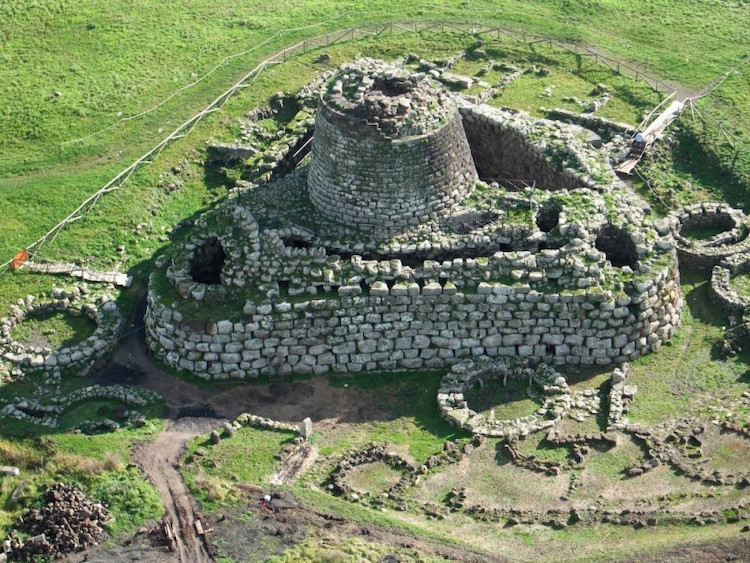Nuragic Complex Of Santu Antine 0 Comments

The symbol of inventiveness and splendor of the Nuragic civilization in Sardinia is the Nuragic Complex of Santu Antine (literally of "San Costantino"), of whose uniqueness I would like to write about today.
It was Antonio Taramelli in 1933, the first archaeologist researching the monumental Nuragic engineering work of Santu Antine, who said: “…It is considered by many scholars to be the excellence of the nuraghes preserved in Sardinia, due to its grandeur, harmony of structure, complexity and evidence of the architectural elements. (…) it constitutes one of the clearest examples of megalithic architecture in the Mediterranean, an indication of power and unity of directives in the Nuragic constructor tribe".
The excavations carried out in 2007 tell us that the nuraghe’s central tower may be dated back to 1800 BC. and subsequently, between 1,600 and 1,450 BC, in the Middle Bronze Age, other parts were added while the building of the keep, the fortified tower, was carried out in the recent Bronze Age. Subsequently, the Nuragic village developed around the entire complex. To date, most of the surface of the village has not yet been brought to light by excavations and we can only imagine what the initial splendor was.
It is not clear the date when it was dedicated to the Byzantine emperor and saint Constantine, who lived from 274 to 337 AD, nor why it is known as sa Domu de su Re (the King’s residence), if referring to its magnificence or to the theory that the tribal chief lived there. The fact is that none of the over seven thousand nuraghes unearthed till now reaches this elaboration and refinement level.
The Nuragic complex is located in the historic region of Meilogu, in the Torralba’s municipality, in the north-western Sardinia, in the Cabu Abbas plain, 1h and 20m car ride and 105 km from the Gabbiano Azzurro Hotel & Suites, where there are over 30 nuraghes. Meilogu is a historical-geographical region of Sardinia in the Province of Sassari. The name means "place in the middle": in fact, it is located exactly in the center of the Torres Judgedom.
The most imposing nuraghe among those in northern Sardinia, a jewel of Sardinian proto architecture, consisting of a keep and a trefoil bastion, i.e., a central tower surrounded by a triangular construction with three openings on top of the corners.
The nuraghe is the cornerstone of the Nuraghe Valley system. The village next to the nuraghe has both the classical huts with a circular plant belonging to the Nuragic age and the houses with a rectangular plant from the Roman period, indicating that the structure was also used after the Nuragic period.
Santu Antine is also important from an archaeo-astronomical perspective because its structure is oriented according to the solstices, as stated by many archaeo-astronomers, including Michael Hoskin, Professor Emeritus at Churchill College, Cambridge, who defined Santu Antine " the most sophisticated dry-stone monument on the earth's surface". Even the scholar Mauro Peppino Zedda agrees with his English colleague on the definition given. Thanks to its orientation the scholar says: "the ancient Sardinians were able to establish the temporal scansion of the seasons and had spatial references on the earth".
“No other expression of antiquity island’s architecture, and even from times closer to us, reveals the sense of power, majesty, solidarity and monumental effort, religiosity that appears in the Nuragic buildings”. (Giovanni Lilliu)
--Written by Daniela Toti
Teilen Sie uns Ihre Meinung mit!